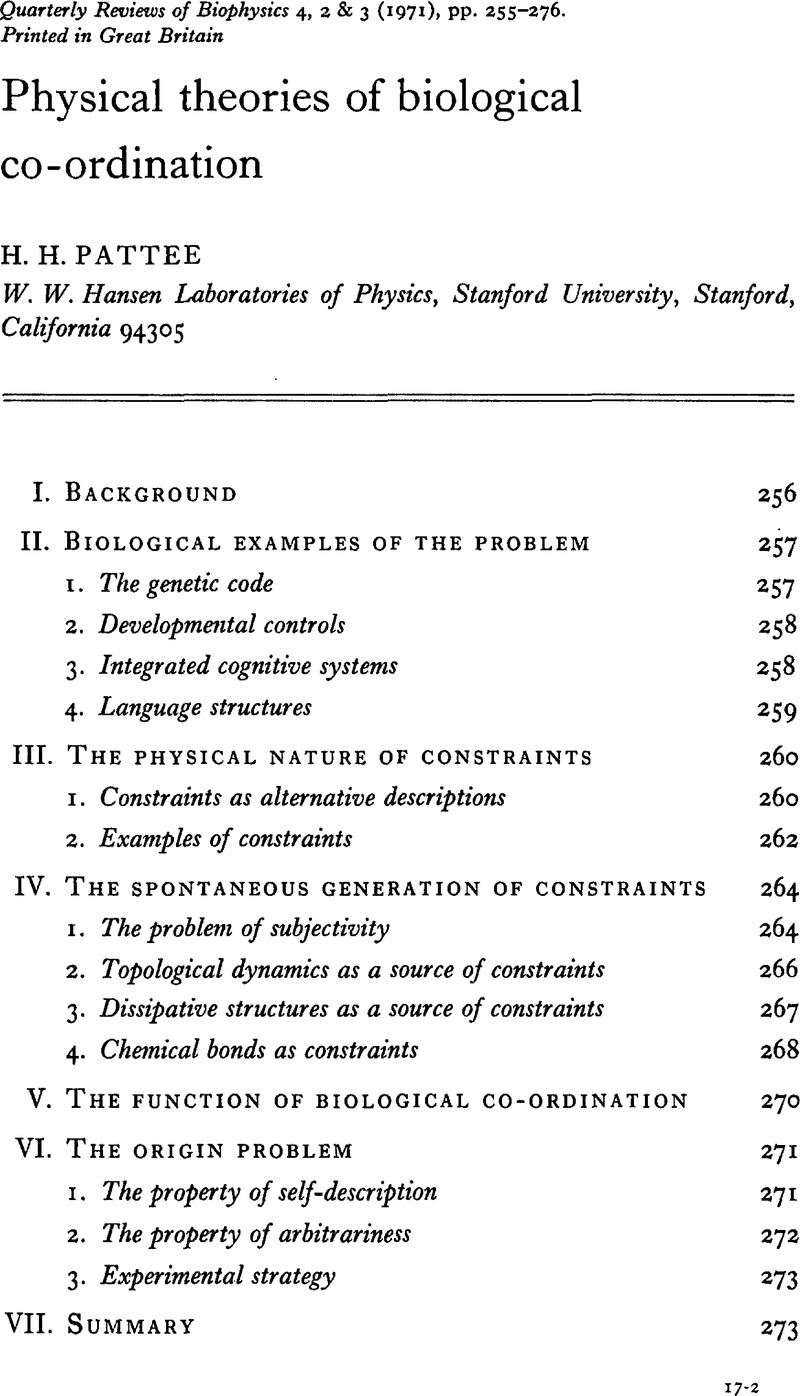Crossref Citations
This article has been cited by the following publications. This list is generated based on data provided by Crossref.
Pribram, Karl H.
1976.
Consciousness and Self-Regulation.
p.
51.
Pribram, Karl H.
1977.
Progress in Ape Research.
p.
57.
Rock, Irvin
1980.
Difficulties with a direct theory of perception.
Behavioral and Brain Sciences,
Vol. 3,
Issue. 3,
p.
398.
Johansson, Gunnar
von Hofsten, Claes
and
Jansson, Gunnar
1980.
Direct perception and perceptual processes.
Behavioral and Brain Sciences,
Vol. 3,
Issue. 3,
p.
388.
Prazdny, K.
1980.
How wrong is Gibson?.
Behavioral and Brain Sciences,
Vol. 3,
Issue. 3,
p.
394.
Zuckerman, Carl B.
1980.
What are the contributions of the direct perception approach?.
Behavioral and Brain Sciences,
Vol. 3,
Issue. 3,
p.
407.
Jones, Rebecca K.
and
Pick, Anne D.
1980.
On the nature of information in behalf of direct perception.
Behavioral and Brain Sciences,
Vol. 3,
Issue. 3,
p.
388.
Doner, Jonathan F.
and
Lappin, Joseph S.
1980.
The function and process of perception.
Behavioral and Brain Sciences,
Vol. 3,
Issue. 3,
p.
383.
Welker, Wally
1980.
Percepts, intervening variables, and neural mechanisms.
Behavioral and Brain Sciences,
Vol. 3,
Issue. 3,
p.
405.
Hinton, Geoffrey E.
1980.
Inferring the meaning of direct perception.
Behavioral and Brain Sciences,
Vol. 3,
Issue. 3,
p.
387.
Ullman, S.
1980.
Against direct perception.
Behavioral and Brain Sciences,
Vol. 3,
Issue. 3,
p.
373.
Loftus, Geoffrey R.
and
Loftus, Elizabeth F.
1980.
Visual perception: the shifting domain of discourse.
Behavioral and Brain Sciences,
Vol. 3,
Issue. 3,
p.
391.
Sloman, Aaron
1980.
What kind of indirect process is visual perception?.
Behavioral and Brain Sciences,
Vol. 3,
Issue. 3,
p.
401.
Gyr, John W.
1980.
Visual perception is underdetermined by stimulation.
Behavioral and Brain Sciences,
Vol. 3,
Issue. 3,
p.
386.
Mackworth, Alan K.
1980.
Are mediating representations the ghosts in the machine?.
Behavioral and Brain Sciences,
Vol. 3,
Issue. 3,
p.
393.
Braddick, O. J.
1980.
Direct perception: an opponent and a precursor of computational theories.
Behavioral and Brain Sciences,
Vol. 3,
Issue. 3,
p.
381.
Koenderink, J. J.
1980.
Why argue about direct perception?.
Behavioral and Brain Sciences,
Vol. 3,
Issue. 3,
p.
390.
Keyser, Samuel Jay
and
Pinker, Steven
1980.
Direct vs. representational views of cognition: A parallel between vision and phonology.
Behavioral and Brain Sciences,
Vol. 3,
Issue. 3,
p.
389.
Reed, Edward S.
1980.
Information pickup is the activity of perceiving.
Behavioral and Brain Sciences,
Vol. 3,
Issue. 3,
p.
397.
von Fieandt, K.
1980.
In defense of invariances and higher-order stimuli.
Behavioral and Brain Sciences,
Vol. 3,
Issue. 3,
p.
404.



